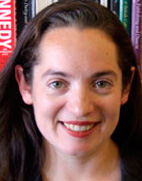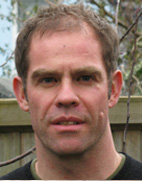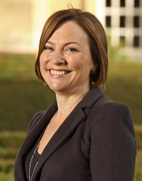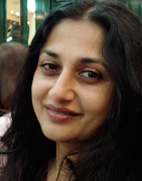Audio Walking Tour of East London
Discover London’s historic East End at your own pace with our free audio tour. Let our academic experts bring more than 200 years of east London’s fascinating past to life, using your MP3 player or smartphone.
The tour starts at Liverpool Street Station and finishes at Stepney Green Tube Station. With 12 stops, it takes around one hour to complete the route.
Tour highlights include:
- Whitechapel murder scene of Jack the Ripper
- East End’s Speakers' Corner (Mile End Waste)
- Petticoat Lane Market
- Christ Church, Spitalfields
- Brick Lane
How to use the tour:
- Listen or watch now. You can listen to the audio walk now on your computer or watch it on YouTube
- Download and save the walk to your MP3 player or smartphone
- Print the map. The walk has an accompanying map of the route and points of interest (PDF format)
Downloads:
Guide:
01 - Liverpool Street Station
01 - Liverpool Street Station
From Liverpool Street Station, the tour takes in key historical sites, figures and events that shaped the history of the East End. Start at the Bishopsgate entrance to Liverpool Street.
02 - Artillery Pass
02 - Artillery Pass
Professor Alastair Owens describes the labyrinth of narrow alleys and streets, which mark the boundary between the wealth of the City and the East End - an area known for its poverty, ill-health and immorality in the 19th century.
03 - Petticoat Lane
03 - Petticoat Lane
Petticoat Lane Market is one of the oldest retail experiences in Britain, dating back to the seventeenth century. Dr Nadia Valman discusses the market’s heyday up to World War II as the social and commercial hub of the Jewish East End.
04 - Jewish Soup Kitchen, Brune Street
04 - Jewish Soup Kitchen, Brune Street
Professor Alastair Owens discusses the Jewish soup kitchen, on Brune Street in east London. The kitchen opened in 1902 to provide food and work skills for poor Ashkanasi Jewish migrants who had fled persecution in Russia and Eastern Europe.
05 - Christ Church Spitalfields
05 - Christ Church Spitalfields
Professor Miles Ogborn talks about the architectural gem of Christ Church, Spitalfields. Commissioned by Sir Christopher Wren, Christ Church was designed by Nicholas Hawksmoor and paid for by a tax on coal.
06 - Huguenot History
06 - Huguenot History
Spitalfields is the architectural legacy of French Huguenot silk weavers. This immigrant community sought refuge in London in the late 17th century, following religious persecution in France. Barred from trading in the City of London by the guilds, Huguenots set up their industry and their homes close by in Spitalfields. Dr Nadia Valman and Professor Miles Ogborn relay its history.
07 - Brick Lane
07 - Brick Lane
Dr Nadia Valman tells the story of the Brick Lane Mosque - a building that embodies the immigrant history of the East End. It started life as a Huguenot Church in the 17th century, erected to express the prosperity of their Calvanist faith. Today, it is a place of worship for the thriving local Bangladeshi community.
08 - Altab Ali Park, Whitechapel Rd
08 - Altab Ali Park, Whitechapel Rd
Altab Ali Park on Whitechapel Road is named in memory of a 25-year-old Bangladeshi man who was murdered in 1978. Shortly after his death, 7,000 people marched on Trafalgar Square to demand better police protection for local minorities. The murder of Altab Ali, says Professor Parvati Nair, brought to the fore a deeply entrenched fight for political and criminal justice among the Bangla people.
09 - Fulbourne Street
09 - Fulbourne Street
On 31 August 1888, the body of Mary Jane Kelly, a victim of Jack the Ripper, was discovered on a street behind what is now Whitechapel Tube station. From crime and poverty to radical politics, Professor Alastair Owens talks about the Victorian East End's global significance.
10 - Mile End
10 - Mile End
Mile End Waste was the East End version of Speakers’ Corner in Victorian times. In the 1860s, William Booth, founder of the Salvation Army, preached here. Professor Alastair Owens explains Booth’s approach to tackling East End poverty and overcrowding; issues that troubled many social reformers of the day.
11 - Trinity Almshouses, Mile End Rd
11 - Trinity Almshouses, Mile End Rd
Professor Miles Ogborn talks about the Trinity Alms Houses, built in 1695 on the Mile End Road. These were charitable homes for retired sea captains, and a quiet haven away from the busy Thames docks.
12 - Lusby’s Music Hall, Mile End Rd
12 - Lusby’s Music Hall, Mile End Rd
Popular entertainment is at the heart of East End history, as Professor Alastair Owens explains. What is now the Genesis Cinema started life as the Eagle Pub in the 1840s. Lusby’s Music Hall, the Paragon Theatre of Varieties, and the Mile End Empire were later reincarnations. At the end of the tour, Professor Amanda Vickery gives her take on what makes a Georgian house, as seen on Mile End Road, so architecturally special.
Meet the academics behind the tour

Alastair is Professor of Historical Geography and Deputy Dean for Taught Programmes (Faculty of Humanities and Social Sciences). A historical geographer, he specialises in Victorian London life and runs the London Studies Masters.

Nadia is a Victorian literature expert at Queen Mary, with a particular interest in Jewish writers. She is currently researching the literary history of the East End of London.

Miles is a historical geographer at Queen Mary. His research focuses on the 18th century when London emerged as a global city, and seat of Britain's maritime power.

Amanda is a historian at Queen Mary and an authority on English domestic life in the Georgian era. She is also an author, broadcaster and presenter.

Parvati is Director of the Centre for the Study of Migration at Queen Mary. She specialises in the life and culture of immigrant communities as represented in film, art and photography.
Credits
This walk is brought to you by Queen Mary University of London.
Words, production and website: Queen Mary University of London and Apercu Media Ltd.
Photography and archive images: Liz Somerville and the Mary Evans Picture Library. Narrator: Joanna Pinnock.
This walk was produced in 2012.